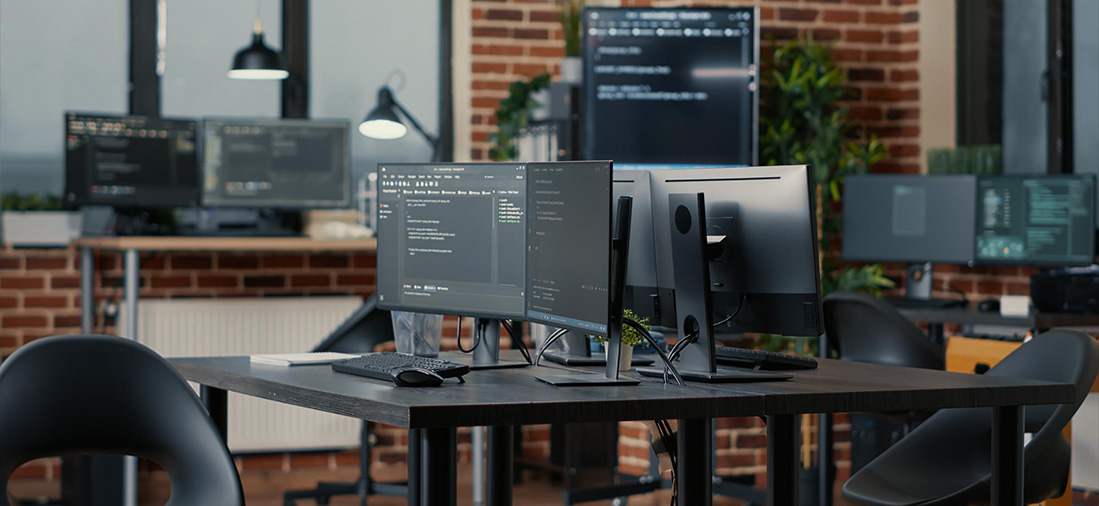Today, web design has evolved into an art-like form that balances aesthetics, usability, and technology. According
to recent studies, 75% of consumers will judge a company's credibility when they first look at the web design, and
57% of users will not recommend a business that has a poorly designed website. For 2025, innovation will grow at a
fast pace, even for web designing. What’s next? Keep reading and you will find out!
Key Takeaways
- Web design trends will change as per technology and user expectations.
- Understanding web design trends will help businesses stay relevant and competitive in 2025.
-
Future trends of web design include sustainability, accessibility, user experiences, motion graphics, grid design,
AI-powered UX design, voice user interface, VR and AR.
What is Web Design
In simple words, creating visual and functional parts of a website is called web design. Imagine it as designing a
home for the internet. Just like architects plan how a house looks and feels, web designers make websites that are
both beautiful and easy to navigate. They use colors, fonts, and layouts, and make sure that everything works well
for users. A good web design is like a welcoming house where you instantly feel comfortable.
What are Web Design Trends
Web design trends are like fashion for websites. They are like the popular styles and features that can make your
website look modern and feel user-friendly. These trends can change over time, because of new technologies and what
users love to see/feel on a website. Just to give an example, dark mode, and minimalist designs were trending in the
last couple of years. By following these trends, your website will stay fresh and engage your site visitors, which
can make them stay longer.
Why Is It Important To Know Web Design Trends
Web design trends are not just about aesthetics, it’s about staying relevant in this fast-moving digital space.
Imagine a new store with outdated decor—you would not want to visit it, right? The same thing goes for websites. If
your website has an outdated website design, it can push users away but with a modern design that matches the recent
technology and user interest, you can not only make them stay on your website but you can attract new users. Trends
like fast-loading pages and mobile-first design will make sure that users will have a smooth experience, no matter
what their device is.
The Future Web Design Trends for 2025
- Sustainable Design: Today, many users know how websites are having an impact on the environment, which is why
sustainable design is more popular because it is eco-friendly. This design reduces energy consumption by
optimizing images, reducing server load, and using green hosting solutions. For example, a company might choose
a hosting provider powered by renewable energy or design a minimalist website that requires less data. This is
good for the planet and attracts eco-conscious users.
- Accessible Design: Accessibility means that everyone, including people with disabilities, can use a website
easily. Think of it as building ramps and elevators, but for your digital space. Features like text-to-speech
tools, easy navigation, and visually pleasing color contrast can make your website inclusive. In 2025,
accessibility will move from a “good-to-have” feature to a standard practice, which meets legal requirements and
also shows the social responsibility of your brand.
- Motion Graphics: Motion graphics can bring life to websites. Even simple animations like button hovers or
scroll-triggered effects can make your website engaging. An online store might use a spinning 3D product model
to give users a closer look into the product and its features. Smooth, more realistic motion graphics can
capture users' attention.
- Grid Design: Grids simply mean an invisible framework that helps in organizing the content on a website. In
2025, grid design will be used for creative layouts to maintain order. Designers may use asymmetrical grids to
create visually stunning but functional designs. For example, a portfolio website might use a split-screen grid
to display the images on one side and text on the other, which can maintain a perfect balance.
- Intelligent Content Loading: Intelligent content loading allows users to download what they need only when they
need it. For example, images and videos will load as and when you scroll, which can reduce the load time. This
improves the user experience and also the site performance when the connection is slow.
- Fast Loading Website: Designers will need to focus on lightweight coding, compressed images, and faster servers.
Imagine waiting for a friend at a cafe—if they’re too late, you’ll leave. The same happens online with a
website. Speed is the need in 2025 to keep users engaged from the second they land on your website.
- Interactive Design: Interactive maps, drag-and-drop tools, and other interactive elements can keep users engaged
on your website. For example, a travel site might use an interactive map to let users plan their trip.
Interactive websites will increase user engagement, and users will become more active on your website.
- AI-Powered UX Design: Artificial Intelligence (AI) is helping designers improve user experiences. AI can now
personalize content based on user behavior, like recommending products or adjusting website layouts as per user
preferences. AI will be your personal assistant for a better user experience. AI-powered UX in 2025 will make
websites user-centric.
- VR and AR: Virtual Reality (VR) and Augmented Reality (AR) are going to be used on websites. Imagine trying on
clothes virtually or exploring a hotel room before booking; that’s where AR and VR can help you. This immersive
technology will close the gap between online and real-life experiences.
- Custom Designs: Custom designs will show your brand personality to the users and make an authentic connection. A
cookie-cutter (basic layout) may not work in 2025. Custom designs will be used more to make every website
unique.
- Mobile-first Design: Most users access the internet with their smartphones, making mobile-first design important
for 2025. This will focus on mobile usability to make the websites fully functional and visually appealing.
- Voice User Interface: Voice interactions will take over in 2025, thanks to smart speakers and virtual assistants
like Alexa, Cortana, Siri, etc. Websites with VUI can be used to search and navigate using voice commands.
Imagine asking a site to “show the latest offers” instead of typing.
Conclusion
The future of web design in 2025 will focus on sustainability, accessibility, technologies like AI, VR, and AR
experiences, which can create engaging and user-friendly websites. These trends will be important for businesses to
maintain relevance and competitiveness in this digital world.










